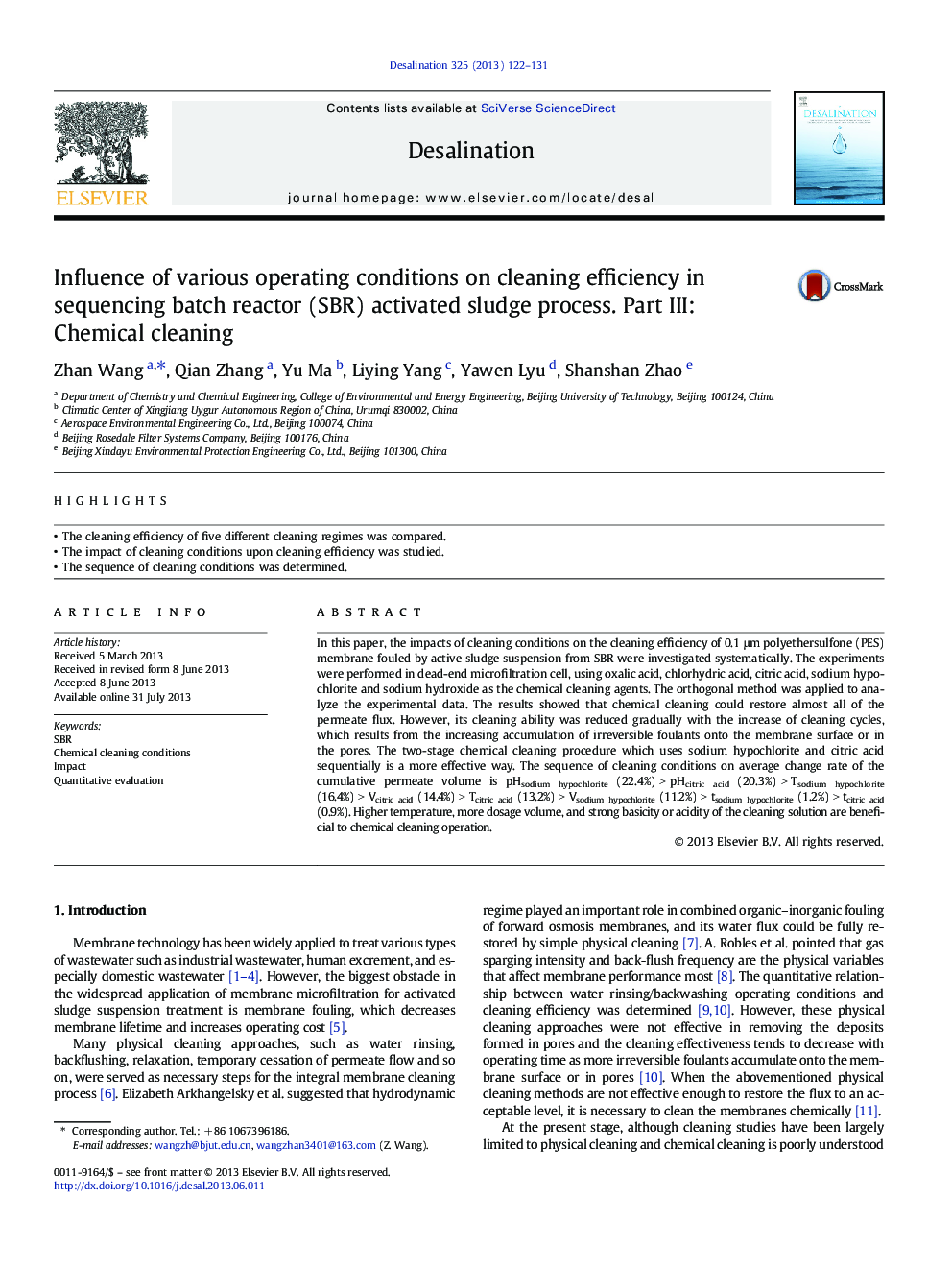| Article ID | Journal | Published Year | Pages | File Type |
|---|---|---|---|---|
| 7008617 | Desalination | 2013 | 10 Pages |
Abstract
In this paper, the impacts of cleaning conditions on the cleaning efficiency of 0.1 μm polyethersulfone (PES) membrane fouled by active sludge suspension from SBR were investigated systematically. The experiments were performed in dead-end microfiltration cell, using oxalic acid, chlorhydric acid, citric acid, sodium hypochlorite and sodium hydroxide as the chemical cleaning agents. The orthogonal method was applied to analyze the experimental data. The results showed that chemical cleaning could restore almost all of the permeate flux. However, its cleaning ability was reduced gradually with the increase of cleaning cycles, which results from the increasing accumulation of irreversible foulants onto the membrane surface or in the pores. The two-stage chemical cleaning procedure which uses sodium hypochlorite and citric acid sequentially is a more effective way. The sequence of cleaning conditions on average change rate of the cumulative permeate volume is pHsodium hypochlorite (22.4%) > pHcitric acid (20.3%) > Tsodium hypochlorite (16.4%) > Vcitric acid (14.4%) > Tcitric acid (13.2%) > Vsodium hypochlorite (11.2%) > tsodium hypochlorite (1.2%) > tcitric acid (0.9%). Higher temperature, more dosage volume, and strong basicity or acidity of the cleaning solution are beneficial to chemical cleaning operation.
Keywords
Related Topics
Physical Sciences and Engineering
Chemical Engineering
Filtration and Separation
Authors
Zhan Wang, Qian Zhang, Yu Ma, Liying Yang, Yawen Lyu, Shanshan Zhao,
